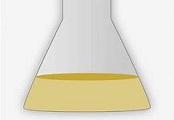The Gold Standard of Prostatitis Diagnosis
Date:2020-02-06 click:0
The diagnostic experts of prostatitis have put forward some new ideas from the diagnostic approaches, which they believe should be diagnosed from the following five aspects.
1. Bacterial culture

Only by taking semen for bacterial culture can we avoid the false impression and damage caused by finger pressure or re-stabbing the prostate. If it is young and middle-aged patients, they can better understand the sperm survival rate, vitality, activity, quantity, white blood cells and so on, in order to help diagnose the extent and relationship of reproductive system infection.
2. Routine examination of prostatic fluid is not the final diagnosis
Prostate fluid accounts for only 1/4 of semen, which is a defective diagnostic method based on routine results of prostatic fluid. The diagnostic criteria of international andrology and American National Hospital clearly stipulate that routine examination of white blood cells in the prostatic fluid has diagnostic significance for every ten times of high field of vision and the decrease of lecithin corpuscles. Only by taking a bacterial culture, can bacterial growth diagnosis be established.
3. Biochemical examination of Andrology
Male patients with prostatitis must undergo a biochemical examination. If they are young and middle-aged patients, they should at least take blood testosterone. Especially for a patient with chronic prostatitis or epididymitis, testosterone levels in testitis are often closely related to the symptoms such as mental, mental, physical, psychological state, and sexual function. When the prostate, testis, and epididymis are inflamed, the level of serum testosterone will decrease in varying degrees. So once a man suffers from prostatitis and genital infection, he must check blood testosterone, PSA, and antibodies.

4. Drugs must be made after bacterial culture
Sensitivity tests can only confirm bacterial prostatitis and other inflammatory infections of the reproductive organs by bacterial culture. The drug sensitivity test is the basis for guiding doctors to prescribe drugs for patients. Only by using drug-sensitive drugs can drugs abuse be avoided, and even drug-resistant strains caused by drug abuse can be avoided, or adverse systemic reactions caused by drug abuse and damage to stomach, liver, kidney, intestinal tract and other organs, and flora imbalance.
5. Ultrasound Imaging
B-mode ultrasonography and CT examination showed an uneven distribution of light spots in prostate tissue. The urinary flow rate of some patients was obstructive. Residual urine, enlargement of seminal vesicle and ridge-like protuberance of the seminal vesicle to urethra were observed in a few patients. Thus, imaging diagnosis can help us to determine whether prostatic hyperplasia in middle-aged and elderly people is accompanied by prostatitis.
The diagnosis of bacterial prostatitis must be based on the above five conditions, which is an objective law and a basic condition that can not be ignored by any patient and medical workers. What are the preparations for the diagnosis of prostatitis? Experts believe that on the premise of establishing the above five diagnostic conditions, we should focus on ensuring the reality, accuracy, and standardization of these five conditions.

1. Before a diagnostic examination, detailed registration and record of medication should be made for 3-5 months.
2. Drug use records and registration should be kept for nearly 4-7 days.
3. A history of finger pressure and re-stabbing the prostate for nearly 4-7 days.
4. A history of treatment and examination of testis and epididymis for nearly 4-7 days.
For example, a patient with chronic bacterial prostatitis was still taking chemical medicines four days before diagnosis. Because of the action of drugs, bacteria may be inhibited to some extent. Therefore, it is possible to examine the results of bacteria-free growth, which is bound to bring the wrong diagnosis of the hidden dangers and false impressions.

If patients suffer from chronic aseptic prostatitis, antibiotics, and other drugs have no obvious effect. Patients can be treated with Diuretic and Anti-inflammatory Pill, which can not only effectively resist inflammation, but also repair the pathological changes caused by prostatitis, improve the environmental tissue immunity, and restore the health of patients.
Recommended readings:
How Long Does It Take for Prostatitis to be Healed?Recommended readings:
How to Prevent Prostatitis or Make its Symptoms Milder?
Is Nitrofurantoin a Good Choice for Treating Prostatitis?



